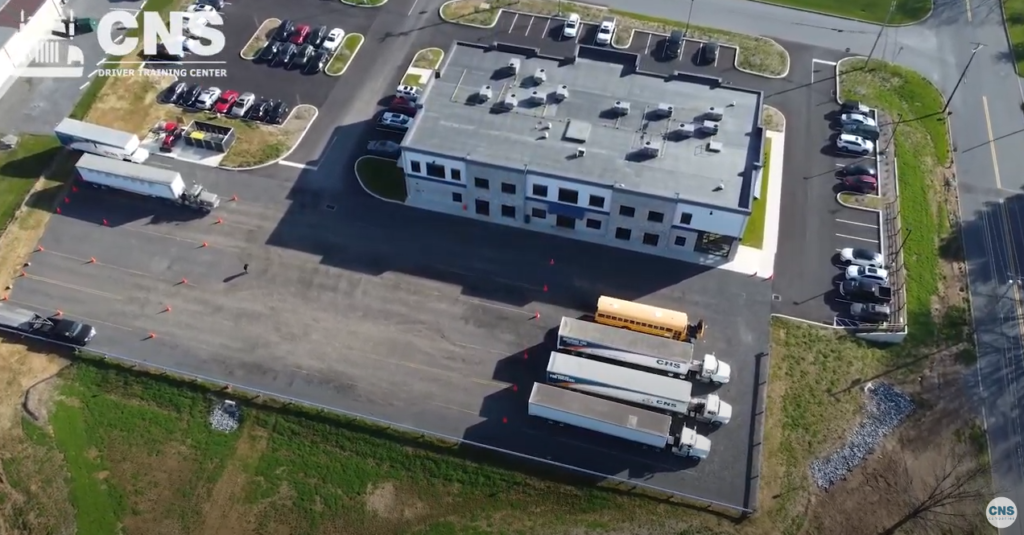Did you know that any firefighter on-call at the station can drive a large firetruck to the incident under their normal driver’s license.
Yes, we know that it is not necessary to have a CDL to drive a fire truck because they are not classified as commercial vehicles and there is a federal exemption that allows firefighters to operate the various apparatus without the need for any special drivers’ licenses.
However, it is highly recommended they have formal driving experience.
In fact, there are some fire departments that will only hire a driver if they have or had a Class A or B CDL.
Let’s look at what is required to drive a firetruck, what experience firefighter driver engineers receive, the challenges in replacing these retiring personnel, and potential solutions to address the shortage of firefighters with driving experience.
What is required to drive a firetruck?
Training is all about safety and making sure that the firetruck driver, or driver engineer, has the skills to properly maneuver the truck.
In rare cases, a fire truck driver may become incapacitated during an emergency response.
Their role is important because fire trucks are not ordinary vehicles. They are heavy, long, and equipped with unique features like hydraulic platforms and aerial ladders.
Typically, fire trucks weigh between 20,000 to 40,000 pounds and are significantly larger and more complex than regular passenger vehicles.
For most fire departments across the country, anyone operating a fire engine must have a valid state license, preferably in-state.
However, in most states, if you do have a CDL A or CDL B license, you can skip this training. Somestates will add this classification to your class C license, but this is done on a state-by-state basis.
Who are firefighter driver engineers?
As the backbone of any firefighting department, driver engineers are responsible for driving and operating complex fire apparatus, such as fire engines and ladder trucks, which carry essential equipment to tackle various emergencies.
One of the primary functions of a fire truck is to carry a substantial amount of water to extinguish fires.
Firefighters with CDL driving experience understand the importance of properly loading and securing the water supply to prevent water sloshing, which could affect the vehicle’s stability during transportation.
They also know how to distribute the weight evenly, enabling the fire truck to maintain control while driving.
Additionally, firefighters’ lives, as well as the safety of the public, depend on the driver engineer’s ability to operate the fire truck safely. They need to navigate through traffic, tight spaces, and adverse weather conditions while ensuring a prompt response to emergencies.
In most cases, a driver engineer will be the main operator of the truck as they undergo rigorous training to master the intricacies of fire truck operation.
However, despite their well-prepared training, a significant challenge arises as experienced firefighter driver engineers approach retirement age.
The challenge of retirement turnover
As the firefighting workforce ages, a significant portion of experienced firefighter driver engineers reaches retirement age.
In fact, two-thirds of firefighters are volunteers and one-third are over the age of 50, often facing a lot of cardiac arrest issues. Additionally, the early morning calls are usually the older firefighters on-duty.
This retirement turnover creates a critical challenge in finding qualified replacements with the necessary driving experience.
Several factors contribute to this issue:
Low Attraction to the Profession: Firefighting can be physically demanding and mentally challenging. As a result, fewer individuals may be inclined to pursue a career in firefighting, further reducing the pool of potential driver engineers.
Limited Exposure to Driving Experience: Many young recruits joining firefighting departments may not have significant driving experience, especially with large vehicles. The shortage of CDL drivers in the general population affects the availability of experienced candidates for firefighter driver engineer positions.
Competitive Job Market: The job market often offers attractive positions in other industries, which can result in potential candidates choosing alternative career paths over firefighting.
Solutions to address the firetruck driver shortage
To address the challenges posed by retirement turnover and the scarcity of experienced driver engineers, firefighting departments can implement several strategies:
Comprehensive Training Programs: Enhance and expand training programs for new recruits, focusing on specialized fire apparatus operation and driving skills. These training programs should be ongoing, ensuring that personnel remain up-to-date with the latest advancements in firefighting technology and driving techniques.
Apprenticeship Programs: Implement apprenticeship programs that pair new recruits with experienced firefighter driver engineers. This on-the-job training allows for hands-on experience and the transfer of knowledge from seasoned professionals to the next generation.
Incentive Programs: Offer competitive salary packages and incentives for firefighters with driving experience, encouraging them to remain in the profession and consider a transition to driver engineer roles.
Collaboration with Educational Institutions: Establish partnerships with local educational institutions, such as community colleges or technical schools, to create specific courses tailored to firefighting and CDL driving. This collaboration can attract more individuals to the profession and provide them with the necessary skills to become qualified driver engineers.
Want to get a CDL before becoming a firefighter?
CNS Driver Training Center can get you trained though our first PA approved 1-on-1 hybrid CDL training program!
As soon as the online theory knowledge is complete, you will move to one-on-one behind-the-wheel training.
This usually consists of 7 to 8 training sessions which last 4 to 5 hours each. We find that most trainees can complete our program in as little as a few weeks, depending on training availability.
Are you a firehouse looking to offer CDL training to your crew?
Our On-Site Company Contract Training Program can be tailored to your specifications from equipment to time frames. If you are interested in group training, we can accommodate that as well.
If you have questions, give us a call at 717-496-9145 or email us at support@cnstrains.com. You can also stop by the office at 151 Koser Rd in Lititz PA.
Need a firefighter pre-employment physical?
Our sister company CNS Occupational Medicine offers firefighter pre-employment physicals, respirator fit tests, pulmonary function tests (PFT), chest x-rays, and more. For specialty tests, we will refer you to another provider.
All examinations are performed by or under the supervision of a licensed physician at our office locations, mobile units, or staffed onsite.
For more information, contact them at 800.551.9816 or info@cnsoccmed.com.








